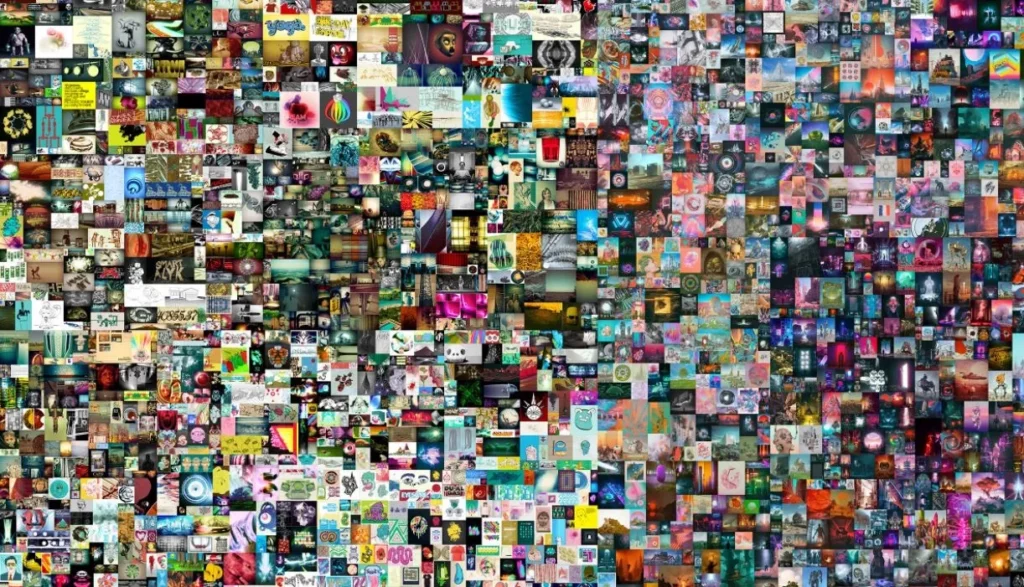In recent years, there has been a growing buzz around the term “NFT.” You may have come across news articles or social media posts mentioning NFTs and wondered what they are all about. In this article, we’ll take a deep dive into the world of non-fungible tokens and explore their basics, technology, rise in popularity, buying and selling process, and their potential future.
Understanding the Basics of NFTs
Before we jump into the details, it’s important to grasp the fundamentals of non-fungible tokens. Simply put, NFTs are unique digital assets that represent ownership or proof of authenticity of a specific item or piece of content. Unlike cryptocurrencies such as Bitcoin or Ethereum, which are interchangeable, each NFT is distinct and cannot be replicated or exchanged on a one-to-one basis.
Definition of Non-Fungible Tokens: NFTs are digital tokens built on blockchain technology that allow artists, creators, and collectors to buy, sell, and trade art, virtual real estate, music, videos, and other digital assets in a secure and transparent manner.
How NFTs Differ from Other Digital Assets: Unlike regular digital files, such as images or videos that can be easily copied and shared, NFTs provide a unique cryptographic certificate of ownership. This certificate, recorded on the blockchain, ensures the verifiability and scarcity of the digital asset, enhancing its value and collectability.
Now, let’s delve deeper into the world of NFTs and explore some fascinating examples of how they are revolutionizing various industries.
Art: NFTs have taken the art world by storm, allowing artists to tokenize their creations and sell them directly to collectors. This eliminates the need for intermediaries like galleries or auction houses, providing artists with more control over their work and enabling them to earn royalties from future sales. Furthermore, NFTs enable provenance tracking, ensuring the authenticity and ownership history of each artwork.
Virtual Real Estate: With the rise of virtual reality and metaverses, NFTs are being used to buy and sell virtual land and properties. These digital assets can be developed, customized, and monetized within virtual worlds, creating new opportunities for investors and entrepreneurs. Virtual real estate NFTs also allow for the creation of unique and immersive experiences for users, blurring the boundaries between the physical and digital realms.
Music: NFTs are revolutionizing the music industry by providing artists with new ways to monetize their work and connect with fans. Musicians can release limited edition albums, exclusive merchandise, or even concert tickets as NFTs, offering fans a chance to own a piece of their favorite artist’s legacy. Additionally, NFTs enable artists to receive direct royalties from secondary sales, ensuring a more equitable distribution of revenue.
Videos and Collectibles: NFTs are not limited to traditional forms of art or music. They can also be applied to videos, allowing creators to tokenize and sell unique video clips or entire films. Additionally, NFTs can represent collectible items in virtual games, giving players a sense of ownership and rarity. This opens up new possibilities for the gaming industry, where virtual assets can have real-world value.
As you can see, NFTs have the potential to transform various industries by providing new avenues for creators, collectors, and investors. With their unique properties and the underlying blockchain technology, NFTs offer a new paradigm for ownership, authenticity, and value in the digital age.
The Technology Behind NFTs
Now that we understand the basics, let’s explore the underlying technology that makes NFTs possible.
Blockchain and Cryptography: The Backbone of NFTs
NFTs are built on blockchain technology, which is a decentralized and immutable ledger that records transactions in a transparent and secure manner. This technology allows for the creation, ownership, and transfer of NFTs without the need for intermediaries such as banks or galleries.
The security of NFTs is bolstered by cryptography. Through complex mathematical algorithms, cryptography ensures that each NFT is unique, indivisible, and impossible to counterfeit. This is crucial for ensuring the scarcity and authenticity of digital assets.
Ethereum and Smart Contracts in NFTs
The majority of NFTs are currently built on the Ethereum blockchain. Ethereum offers a rich infrastructure, including smart contracts, which are self-executing contracts with predefined rules encoded on the blockchain.
Smart contracts play a vital role in NFTs as they enable automatic ownership transfers, royalties, and other conditions associated with the digital assets. By leveraging smart contracts, artists can earn royalties from the future sales of their NFTs, ensuring ongoing compensation for their work.
The Rise of NFTs in the Digital World
With the groundwork laid, let’s explore the incredible rise of NFTs in recent years.
The History and Evolution of NFTs
NFTs have been around for several years, but it was in early 2021 that they truly exploded into the mainstream. Artists, musicians, and celebrities began embracing NFTs as a means to monetize their digital creations and engage directly with their fans.
Collectors and enthusiasts flocked to NFT marketplaces, resulting in jaw-dropping sales of digital art pieces, virtual real estate, and even tweets. This surge in popularity sparked a global conversation about the future of art and ownership in the digital age.
Notable NFT Sales and Trends
Among the eye-catching sales, one cannot overlook the record-breaking sale of Beeple’s digital artwork for a staggering $69 million. This sale not only made headlines but also demonstrated the immense value that can be attached to digital assets.
Beyond art, NFTs have also infiltrated the sports and gaming industries. We’ve witnessed NBA Top Shot redefine the trading card market by selling digital basketball highlights as NFTs, and virtual gaming worlds like Decentraland rise in popularity, where users can buy and sell virtual land and unique in-game items as NFTs.

How to Buy and Sell NFTs
Now that you’re familiar with the rise of NFTs, let’s delve into the process of buying and selling them.
Platforms for Trading NFTs
There are numerous platforms available for buying, selling, and trading NFTs. Some of the popular ones include OpenSea, Rarible, SuperRare, and Nifty Gateway. Each platform has its unique features, user interface, and fees, so it’s important to explore and choose the one that aligns with your preferences and interests.
It’s worth noting that while these platforms offer a wide array of NFTs, they can also be used as marketplaces for minting and selling your own creations.
The Process of Purchasing an NFT
The process of purchasing an NFT typically involves creating an account on the chosen platform, connecting a digital wallet such as MetaMask, and acquiring the cryptocurrency required for the purchase. Once you have your funds ready, you can browse through the available NFTs, place bids or make direct purchases, and complete the transaction.
It’s crucial to conduct thorough research, verify the authenticity of the NFTs, and assess the reputation of the artist or creator before making a purchase. Due to the nascent nature of the NFT market, scams and counterfeits can unfortunately occur.
The Future of NFTs
As with any emerging technology, the future of NFTs holds both exciting opportunities and challenges.
Potential Applications and Impacts of NFTs
The potential applications of NFTs extend far beyond the realms of art and collectibles. NFTs can revolutionize industries such as real estate, music, fashion, and even governance. Imagine buying a virtual plot of land, attending virtual concerts, or having digital identities that persist across platforms and games.
NFTs can also empower artists by enabling direct relationships with their audience, removing intermediaries, and ensuring fair compensation through smart contracts and royalties.
Criticisms and Controversies Surrounding NFTs
Despite the hype, NFTs have faced criticism and controversies. Concerns about the environmental impact of energy-intensive blockchain networks, the potential for money laundering, and the bubble-like nature of the market have all been raised.
It’s essential for creators, collectors, and the wider community to address these concerns and find sustainable solutions to ensure the long-term viability and positive impact of NFTs.
In conclusion, non-fungible tokens have revolutionized digital ownership and creativity, offering artists new avenues for monetization and collectors unique digital experiences. As NFTs continue to evolve, it’s critical for all stakeholders to embrace responsible practices and explore the limitless potential that this technology holds.
Frequently Asked Questions
What exactly is an NFT in simple terms?
What does an NFT actually do?
References:
https://www.theverge.com/22310188/nft-explainer-what-is-blockchain-crypto-art-faq

